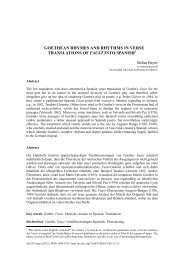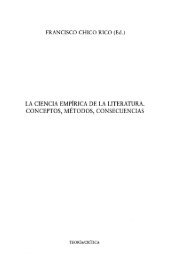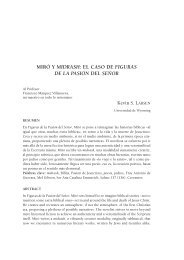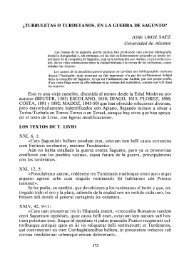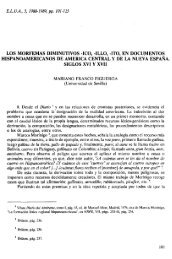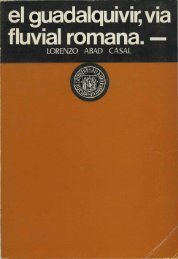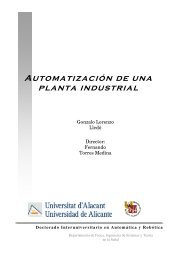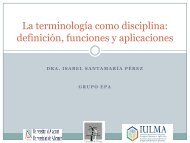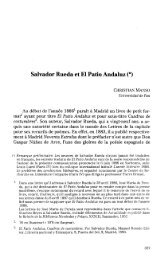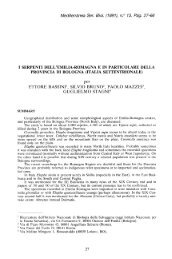ecological effects of marine protected areas empafish project ...
ecological effects of marine protected areas empafish project ...
ecological effects of marine protected areas empafish project ...
Create successful ePaper yourself
Turn your PDF publications into a flip-book with our unique Google optimized e-Paper software.
EMPAFISH Booklet no. 1 Ecological <strong>effects</strong> <strong>of</strong> Atlanto-Mediterranean MPAs in the EU<br />
Contacts<br />
Ente Parco Nazionale Arcipelago Toscano<br />
Via Guerrazzi, 1, I-57037, Port<strong>of</strong>erraio (LI), Italy<br />
Tel: +39-0565-919411 / Fax: +39-(0)565-919428<br />
Email: parco@islepark.it<br />
Website: www.islepark.it<br />
Tuscany archipelago: <strong>ecological</strong> studies<br />
� General<br />
o Benthic communities<br />
The ecology <strong>of</strong> benthic assemblages was investigated in the area since the<br />
late 1990s. Patterns <strong>of</strong> variability <strong>of</strong> mid-shore and low-shore algal and<br />
invertebrate assemblages on Tuscany Archipelago rocky shores were<br />
investigated at several scales in space and time. It was documented large<br />
variability <strong>of</strong> organisms across the vertical gradient <strong>of</strong> the shore and<br />
horizontal variability mainly at small (10s <strong>of</strong> cm) and large (100s to 1000s <strong>of</strong><br />
m) spatial scale (Benedetti-Cecchi 2001). As part <strong>of</strong> these studies,<br />
assemblages <strong>of</strong> rocky shores on islands were compared to those <strong>of</strong> the<br />
mainland in order to examine if insular assemblages could be considered<br />
unique because they are exposed to particular patterns <strong>of</strong><br />
colonization/extinction depending on distance from other sources <strong>of</strong> colonists<br />
and on size <strong>of</strong> islands, or if islands provide different habitats, regardless <strong>of</strong><br />
potential <strong>effects</strong> <strong>of</strong> size and isolation. Structure <strong>of</strong> assemblages, mean<br />
abundance <strong>of</strong> common taxa and magnitude <strong>of</strong> spatial and temporal variance<br />
in abundance at mid-shore and low-shore habitats differed between islands<br />
and the mainland, indicating that islands in the Tuscany Archipelago<br />
contributed to diversity and complexity <strong>of</strong> rocky shore assemblages over and<br />
above any possible effect <strong>of</strong> size and isolation (Benedetti-Cecchi et al. 2003a).<br />
Patterns in distribution and demography were analysed in detail for the<br />
barnacle Chthamalus stellatus, indicating large temporal and spatial variability<br />
at different scales, probably driven by pre-emption <strong>of</strong> the substratum and<br />
mortality <strong>of</strong> juveniles (Benedetti-Cecchi et al. 2000a).<br />
Data from experiments <strong>of</strong> exclusion <strong>of</strong> limpets documented the importance <strong>of</strong><br />
grazing by limpets in maintaining differences between mid-shore and lowshore<br />
algal assemblages, with patterns generally independent <strong>of</strong> the<br />
inclination <strong>of</strong> the substratum, but largely variable in space and time<br />
(Benedetti-Cecchi et al. 2000b, 2001a). Empirical data were also related to<br />
predictions obtained from simulations, indicating that the understanding <strong>of</strong><br />
<strong>effects</strong> <strong>of</strong> consumer documented could be implemented by including in foodweb<br />
models changes in variance <strong>of</strong> trophic interactions (Benedetti-Cecchi<br />
2000).<br />
The occurrence <strong>of</strong> canopy-forming algae in the genus Cystoseira in the area <strong>of</strong><br />
Tuscany Archipelago appeared related to anthropogenic disturbance, as<br />
indicated by their dominance on relatively pristine shores and their virtual<br />
absence in urban <strong>areas</strong>, where, in contrast, they were replaced by turf-<br />
105





